![]()
![]()
![]()
Use LEFT and RIGHT arrow keys to navigate between flashcards;
Use UP and DOWN arrow keys to flip the card;
H to show hint;
A reads text to speech;
264 Cards in this Set
- Front
- Back
|
level of training established by the NFPA allowing first responders to take defensive actions at haz mat incidents are expected to do all the same as awareness plus initiate defensive actions to protect the public, environment and property from the effects |
operations level |
|
|
SAR |
supplied air respirators |
|
|
APR |
air purrifying respirators |
|
|
PAPRS |
powered air purifying respirators |
|
|
the disadvantages of scbas are |
weight, limited air, change in profile that may hinder mobility, limited vision, limited communication |
|
|
CBRNE |
chemical biological radio-logical nuclear agents explosive |
|
|
__________ or ___________ is an atmosphere supplying respirator in which the user does not carry the breathing air source. |
SAR or airline respirator |
|
|
this usually consists of a face-piece a belt or face-piece mounted regulator a voice communications system up to 300 ft of air supply hose an emergency escape pack or emergency breathing support system and a breathing air source mounted on a cart. |
SAR |
|
|
NIOSH classifies SARS as a _______ |
type c respirators |
|
|
__________ has the advantage of reducing physical stress to the wearer by removing the wight of the scba however the air supply line is a limitation because of the potential for mechanical or heat damage |
SAR |
|
|
_________ contain a filter, canister or cartridge that removes specific contaminants found in ambient air as it passes through the _______________ element |
APR
|
|
|
APR can be divided into three types
|
particulate removing
vapor and gas removing combination |
|
|
PAPRS |
powered air purifying respirtator |
|
|
__________ do not supply oxygen or air from a separate source the protect only against specific contaminants or at a below certain concentrations |
APR |
|
|
aprs do not protect against_____________ or _____________ |
oxygen deficient or oxygen enriched atmosphers |
|
|
three primary limitations of an apr are |
limited life of its filter need for constant monitoring of contaminated atmosphere need for a normal oxygen content of the atmosphere |
|
|
the precautions that should be taken before using APRS |
-know chemicals/air contents -know how much of the chemicals/air contaminants are in the air -ensure that the oxygen level is between 19.5 and 23.5 percent. -ensure that atmospheric hazards are below IDLH conditions |
|
|
---------------- proctect the user from particulates in the air |
particulate removing filters |
|
|
_____________ are divided into nine classes three levels of filtration and three categories of filter degradation |
Particulate removing filters
|
|
|
particulate removing filters may be used to protect agains |
toxic dusts mists metal fumes asbestos biological hazards |
|
|
_________ uses a blower to pass contaminated air through a canister or filter to move the contaminants and supply the purified air to the full face piece. |
PAPRS |
|
|
highest level of skin, respiratory and eye protection from solid liquid and gaseous chemicals |
Level A |
|
|
This ensemble components are positive pressure, full face piece, scba vapor protective suits coveralls long underwear chemical resistant outer gloves chemical resistant inner gloves chemical resistant boots with steel toe and shank disposable protective suit, gloves and boots, hardhat two way radios |
Level A |
|
|
_________ protection requires a garment that includes an SCBA or a SAR and provides protection against splashes from a hazardous chemical. |
Level B |
|
|
what ensemble is worn when the highest level of respiratory protection is needed but a lesser level of skin protection is needed |
level b |
|
|
this consist or a positive pressure scba, hooded chemicals resistant suit, inner and outer gloves and chemical resistant boots |
Level b |
|
|
this consist of splash protecting garment and an air purifying device |
Level C |
|
|
________ level is used only when the specific material is known and has been measured and this protect level is approved by the ic |
C |
|
|
what falls under the U.s epa levels of protection |
Levels A-D |
|
|
what are the NFPA ppe ensemble classification |
Class 1-3 |
|
|
these are designed to protect responders at chemical biological terrorism incident in these situations -whenever the identity or concentration of the vapor or quid agent is undetermined or in question -when vapor protection is needed -anytime liquid contact is expected an no direst skin contact can be permitted |
class 1 |
|
|
these are designed to protect responders at chemicals biological terrorism incidents in these following situations -to provide necessary sufficient vapor protection -when direct contact w liquid droplets is likely -when victims are not ambulatory but are showing signs or symptoms of exposure |
class 2 |
|
|
are designed to protect responders at chemical biological terrorism incident in these situations -provide necessary sufficient liquid protection for the intended operation is necessary -when direct contact with liquid droplets is likely -when victims are impaired but ambulatory |
class 3 |
|
|
MOPP |
Mission Oriented protective posture |
|
|
Mopp is used |
in the military to protect against chemical biological and radio logical hazards |
|
|
these hazard can cause temperature extremes such as with elevated temp materials, exothermic reactons, fires explosions or cryogenic liquids |
thermal hazards |
|
|
gases that are convefted into liquids by beeling cooled below 150 f
|
cryogenic
|
|
|
this potential for radiation exposure exists when firefighters respond to incidents at medical centers, certain industrial operations nuclear power plants, and research facilities |
radiological hazards |
|
|
Types of ionizing radiation are
|
alpha
beta gamma neutron |
|
|
these ionizing radiation lose energy rapidly and do not penetrate very far. harmful if ingested or inhaled they are usually completely blocked by the outer layer of the human skin |
alpha |
|
|
these ionizing radiation are fast moving positively or negatively charged electrons emitted from the nucleus during radioactive decays. t Can be stopped by a layer of clothes or aluminum
|
beta
|
|
|
High enegry protons. do not have charge or mass but very penetrating. can easily pass through human body, 2ft of concrete or 2 in of lead can stop these rays |
gamma
|
|
|
ultra high energy and have physical mass and highly penetrating |
neutron |
|
|
exposure to a large dose of radiation received in a short period of time is an ____________ |
acute dose |
|
|
small amounts of radiation received over a long time are |
chronic dose
|
|
|
possible health effects from acute doss of radiation include
|
reduced blood count, hair loss, n/v, diarrhea and fatigue
|
|
|
what are the three recongized ways to provide protection from external radiation during an emergency |
time distances shielding |
|
|
____________ affect the oxygenation of the body and generally lead to suffocation |
asphyxiants |
|
|
_________ asphyxiants are gases that displace the oxygen necessary for breathing |
simple |
|
|
_______ asphyxiants are substances that prohibit the body from using oxygen and some of these chemicals may be used by terrorists for an attack.
|
chemical
|
|
|
the likelihood of an adverse health effect occurring in chemical hazards depend on three factors |
toxicity of chemical
pathway or route of exposure
nature and extent of exposure
|
|
|
routes of entry are |
inhalation
ingestion
contact
absorption
|
|
|
minimum amount of solid/liquid that will kill |
Lethal dose (LD) |
|
|
single dose of substance that will cause death 50% of those who encounter
|
median lethal dose (MD 50)
|
|
|
lowest administered dose of a material capable of killing a specified test species |
lethal dose low (LD lo or LDL)
|
|
|
minimum concentration of an inhaled substance in the gaseous state that will be fatal to the test group. |
lethal concentration (LC)
|
|
|
this toxin targets the kidney |
nephrot |
|
|
this toxin targets the blood |
hemotoxin |
|
|
this toxin targets the nervous system |
neurotixins |
|
|
this toxin targets the immune system |
immunotoxins |
|
|
this toxin targets the endocrine system |
endcrine toxins |
|
|
this toxin targets muscles bones |
muscolskeletal toxins |
|
|
this toxin targets the lungs |
respiratory toxins |
|
|
this toxin targets skin |
cutaneous hazards |
|
|
this toxin targets the dna |
mutagens |
|
|
this toxin targets the embryo/fetus |
teratogens |
|
|
this toxin targets all |
carcinogens |
|
|
IDLH |
immediately dangerous to life or health |
|
|
concentration of a given material in parts per million thay may be tolerate for an 8 hr exposure during a regular wook week without ill effects |
TLV |
|
|
fifteen minute time wighted avrerage exposure that should not be exceeded at any time nor repeated more than four times daily with a 60 minute rest period |
STEL or TLV |
|
|
maximum concentration of a given material in parts per million that should not be exceeded even instantaneously |
Threshold limit value/ceiling (TLV/C)
|
|
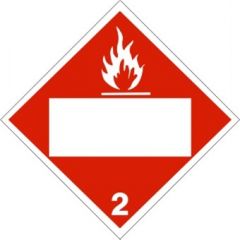
|
flammable gas division 2.1 |
|
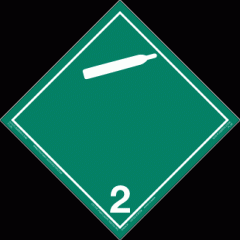
|
non flammable gas div 2.2 |
|

|
poisonous gas by inhalation
|
|
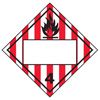
|
flammable solid division 4.1 |
|

|
Division 4.2 spontaneous combustible material |
|
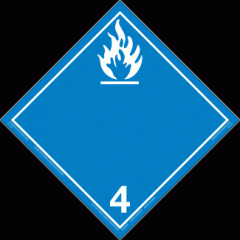
|
division 4.3 dangerous when wet
material could become spontaneously flammable or release flammable toxic gas when in contact with water
|
|
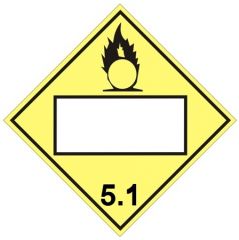
|
division 5.1
oxidizer
5.2 is half red and half yellow with the red on top and is for organic peroxide
|
|

|
division 6.1 poisonous material |
|
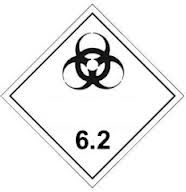
|
6.2 infectious substance |
|
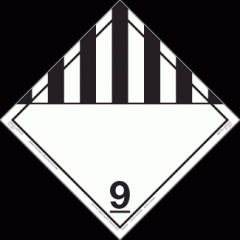
|
class 9 miscellaneous |
|
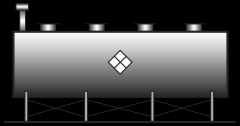
|
horrizontal tank
for flammable and combustible liquids corrosives poisons and etc
|
|
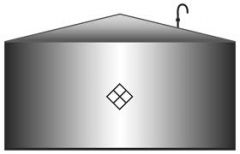
|
cone roof tank for flammable combustivle and corrosive storage. these are mainly for liquids |
|

|
open top floating roof tank mainly for liquids for flammable and combustible storage |
|
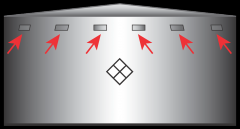
|
covered top floating roof tank
for flammable and combustible storage
|
|
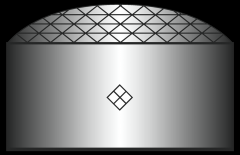
|
covered top floating roof tank for flammable liquid storage |
|
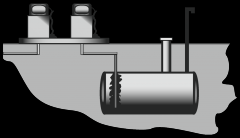
|
petroleum storage tanks |
|
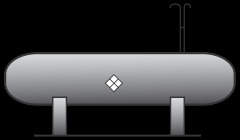
|
high pressure horizontal tank
stores lp gases anhydrous ammonia high vapor pressure flammable liquids
|
|
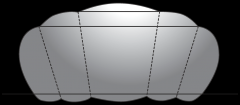
|
noded spheroid tank =lpg methane, and some flamable liquids (gasoline + crudeoil) larger and flatter in shape than spheroid tank |
|
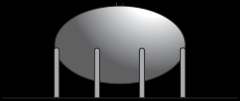
|
spheroid tank
lpg methane and some flammable liquids (gasoline +cride po;/
|
|
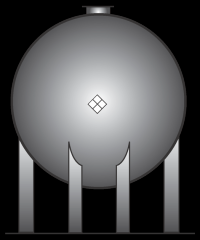
|
high pressure spherical storage tank (stores lp gases) |
|
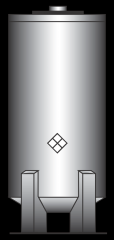
|
cryogenic liquid storage tank stores liquid oxygen liquid nitrogen liquid carbon dioxide etc |
|

|
nonpressure tank car= flammable liquids + solids, oxidizers, etc. olders models come with expansion dome fitting are visible |
|
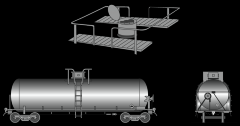
|
typical pressure tank car=flammable, nonflammable and poison gases as well as flammable liquids fittings are inside protective housing |
|

|
cryogenic liquid tank car= argon hydrogen, nitrogen, oxygen, lng and ethylene |
|

|
high pressure tube cart |
|

|
covered hopper carries calcium carbide cement grain |
|

|
open top hopper carries coal rock sand |
|

|
Gondola carries sand rolled steel and other products and matrials that do not require protection from the weather |
|
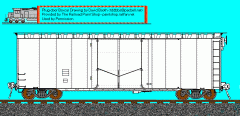
|
box car carries all materials and finished goods |
|
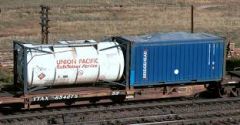
|
flat bed car with intermodal tanks carries various products in containers such as chlorine cylinders intermodal containers large vehicles othe commodities that do not require protecton from the weather |
|
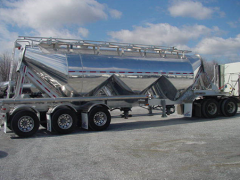
|
pneumatic hopper carries placstic pellets flour other fine powdered materials |
|

|
non pressure DOT 406/Mc 306 gasoline, fuel, oil, alcohol, other flammable combustible liquids |
|
|
toxins that cause temporary but sometimes severe inlammation to eyes, skin, or respiratory system |
irritants |
|
|
toxic material that causes convulsions |
convulsants |
|
|
cancer causing agents |
carcinogens
|
|
|
microorganisms such as virus's or bacteria |
etillogical hazards |
|
|
viruses that can only replicate themselves in the living cells of their host |
viral agents |
|
|
microscopic single celled organisms |
bacterial agents |
|
|
specialized bacteria that live and multiply in the gi tract |
rickettsias |
|
|
poisons produced by living organism |
biological toxins |
|
|
measure of the tendency of a substance to evaporate, pressure at which a vapor is in equilibrium with its liquid phase for a given temp |
Vapor pressure |
|
|
temperature of a substance when the Vapor pressure exceeds atmospheric pressure at this temp the rate of condensation at this point more liquid is turning into gas then gas is turning back into a liquid |
boiling point |
|
|
weight of a given volume of pure Vapor or gas compared to the weight of an equal volume of dry air at the same temp and pressure |
Vapor density |
|
|
pressure produced by the vapors released by a liquid |
Vapor pressure |
|
|
Vapor density less than 1 indicates |
a vapor lighter than air |
|
|
Vapor density grater than one is |
vapor heavier than 1 |
|
|
Acetylene methane and hydrogen are examples of materials with |
a vapor density less than one |
|
|
specific gavity less than 1 indicates a substance |
lighter than water |
|
|
specific gravity grater than 1 indicates |
substance heavier than water |
|
|
__________ of a chemical is its ability to reamin in the environment |
persistence |
|
|
___________of a substance is its relative ability to undergo a chemical reaction withanother material |
reactivity |
|
|
the reactivity triangle s basic components of many are |
oxidizing agent
reducing agent
activation energy source (often heat)
|
|
|
GEBMO |
general hazardous materials behavior model |
|
|
GHMBM is used to help |
ff understand the likely course of an incident
thereby enabling them to successfully mitigate it
|
|
|
The general pattern followed in a hazardous material incident are |
stress
breach
dispersion/engulf
exposure/contact
harm
|
|
|
if a container is pushed beyonds its design strength, it fail or breaches is a example of |
stress |
|
|
the three types of container stress are |
thermal
chemical
and mechanical
|
|
|
this is a failure of the container |
breech |
|
|
five types of breech |
disintegration(loss of integrity)
Runaway (crack)
Attachments (fail)
Puncture (forklift)
Split/tear (seam fails)
|
|
|
four ways the contents release |
Detonation(instantaneouse)
Violent rupture (immediate release caused by runaway)
rapid (caused by damage attachments)
Spill/Leak (slow release through pressure)
|
|
|
dome shaped pattern of airborne haz material that is still partially in contact with the ground or water |
hemispheric |
|
|
ball shaped pattern of the airborne hazardous material where the material has collctively risen above the ground or water |
cloud |
|
|
irregularly shaped pattern of an airborne hazardous material where wind and or topography influence the downrange course from the point of realease |
plume |
|
|
triangular shaped pattern of a hazardous material with a point source at the breach and a wide base downrange |
cone |
|
|
surface following pattern of liquid hazardous material that is affected by gravity and topography contours. |
stream |
|
|
three dimensional slow flowing liquid dispersion |
pool |
|
|
irregular deposits of a haz material such as that carried by contaminated responders |
irregular |
|
|
exposure/contact have three time frames |
short term-seconds, minutes, and hours medium term- days, weeks, and months long term- years |
|
|
non pressure tanks are also called |
atmospheric tanks |
|
|
non pressure tanks/ atmospheric tanks are storing any product they will nomally have |
a small amount of pressure up to .5 psi |
|
|
pressure tanks are broken into 2 catagories |
low pressure storage tanks pressure vessels |
|
|
tanks that have pressures between .5-15 psi |
low pressure tank |
|
|
__________vessels have pressures above 15 psi |
pressure |
|
|
underground storage tanks may be |
atmospheric or pressurized |
|
|
Bulk containers can be divided into three catagories |
tank and orther rail cars cargo tanks intermodal containers |
|
|
non pressure tank cars usually have below |
25 psi |
|
|
pressure tank cars |
pressures greater than 25 psi at 68 deg f |
|
|
the dot 406/mc 306 is a |
nonpressure liquid tank |
|
|
dot 407/mc 307 is a |
low pressure chemical/liquid tank |
|
|
dot 412/ mc 312 is a |
corrosive liquid tank |
|
|
mc/tc 331 is a |
high pressure tank |
|
|
mc/tc 338 is a |
cryogenic tank |
|
|
dot/tc 407/dot/tc 412 are |
vacume loaded tank |
|
|
examples of atmospheric/nonperssure storage tanks |
-horizontal tank
-cone roof tank
-open top floating roof tank
-floating deck
-covered top floating roof tank
-covered top floating roof tank with geodisic dome
-capordome roof tank
-underground storage tank
|
|
|
examples of low pressure storage tanks |
dome roof tank
spheroid tank
noded spheroid tank
|
|
|
examples of pressure vessels |
horizontal pressure vessel spherical pressure vessel cryogenic liquid storage tank |
|

|
hydrogen cyanide HCN candy stripe car. |
|
|
indicates the product may have minor health effects such as eye or skin irritaion |
caution |
|
|
indicates the product has moderate hazards such as significant health effects or flammability |
warning |
|
|
intdicates the highest degree of hazard (used on products that have potentially severe or deadly effects. |
danger |
|
|
required in addition to danger on the labels of highly toxic materials |
poison |
|
|
msds gives this information |
hazardous ingredients physical and chemical properties physical and health hazards routes of entry precautions for safe handlng and use emergency and first aid procedures control measures
|
|
|
canada centers are called |
canutec |
|
|
mexico centers are |
setiq cenacom |
|
|
small spill is less |
53 gallons or less |
|
|
large spill is |
more than 53 gallons |
|
|
distance within which all persons should be considered for evacuation in all directions from an actual hazard |
initial isolation distance |
|
|
circular zone with a radius equivalent to the initial isolation distance within which ersons may be exposed to dangerous concentrations up wind of the source and life threatening concentrations downwind of the source |
initial isolation zone |
|
|
represents a downwind distance from a spill/leak source within which protective actions should be implemented |
protective action distances |
|
|
-victims in a concentrated area -syptoms immediate (seconds to hrs) -symptoms very similar to (SLUDGEM) -observable features such as chemical residue dead foliage dead animals and pungent odor |
Chemical attack |
|
|
victims dispersered over a wide area syptoms delayed syptoms most likely vague and flulike no observable features |
biological attack |
|
|
explosion self evident vicitms in a concentrated area mechanical and thermal injures potential radiation and chemical agent risk |
explosive attack |
|
|
explosion self evident vicitms in a concentrated area mechanical and thrermal injures initially, radiological symptoms if any will likely be delayed radiation detected through monitoring |
radiological attack |
|
|
some people teach the syptoms of exposure to chemical warfare agents with the acronym |
sludgem
|
|
|
Sludgem |
salivation (drooling) |
|
|
sLudgem |
lacrimaton (tearing) |
|
|
slUdgem |
Urination |
|
|
sluDgem |
defaction |
|
|
sludGem |
gastrointestinal upset/aggravation cramping |
|
|
sludgEm |
emesis(vomiting) |
|
|
sludgeM |
pinpointed pupils or muscular twitching miosis |
|
|
these attacks utilize viruses |
biological attacks |
|
|
these attacks may utilize chemical warfare agents like nerve agents blister agents blood agents choking agents and riot control agents as well as toxic industrial materials or toxic industrial chemicals |
chemical attacks |
|
|
these attacks utilize weapons that release materials most likely in the form of dust or powder |
radiological attack |
|
|
if comdemser tubes filters funnels gas containers glassware heat source (budson burner) grinders ph papers tubing are found what can you suspect |
meth lab |
|
|
these labs have glass ware ttubing bunsen burners chemical bottles and other trappings traditionally associated with the term laboratory |
explosives lab |
|
|
Aloha |
area location of hazardous atmospheres |
|
|
these can assist in the predition of plume dispersion patters |
aloha |
|
|
chemicals pass into and through a material on a molecule level by this process |
permeation |
|
|
HAZPOWER regulations are located in |
OSHA 29 CRF 1910.120 |
|
|
NFPA standard on liquid splash protective clothing for haz.mat emergencies |
1992 |
|
|
NFPA STANDARD ON VAPOR PROTECTIVE ESEMBLES FOR HAZ MAT EMERGENCIES |
1991 |
|
|
approximately how many organic and inorganic substances are registered for commercial use in the u.s. |
40,000,000 |
|
|
canada centers |
CANUTEC |
|
|
mexico centers |
SETIQ CENACOM |
|
|
BRAZIL CENTER |
PRO QUIMICA |
|
|
Argentina center |
CIQUIME |
|
|
top section of msds chemical identity |
chemical and common names identify cross reference to the identy found on the label |
|
|
section a on MSDS manufactures information and chemical identity |
manufacturers name and address emergency telephone date prepare
|
|
|
section II hazardous ingredints |
chemical and common names of hazardous components permissible exposure limits (PEL) and other recommened exposure limits |
|
|
section III physical and chemical characteristic |
-boiling point
-vapor pressure
-vapor density
-specific gravity
-melting point
-evaporation rate
-solublity in water
-physical appearance and odor
|
|
|
section IV fire and explosion hazard data |
-flashpoint
-flammability limits (lower and upper exposive limits)
-extinguishing media
-special fire fighting procedures
-unusual fire and explosion hazards
|
|
|
section V reactivity (instability) data |
-stability
-incompatibility
-hazardous decomposition or by products
-hazardous polymerization
|
|
|
section VI health hazards data |
-routes of entry
-health hazards (acute and chonic)
-carcinogenicity
-signs and symptoms of exposure
-emergency and first aid procedures |
|
|
section VII precaustions for safe handling |
-steps to be taken in case of release or spill waste disposal method
-precautions to be takin in handling or storage and other precautions
|
|
|
VIII- control measures |
-engineering control such as ventilation, safe handling procedures, and ppe
-work/hygienic practices |
|
|
a liquid compound with a pH less than 7 |
acid |
|
|
ph balance of 7 is |
nuetral |
|
|
ph balance of 8-14 is |
base or alkalis |
|
|
this foam is used in storage tanks, subsurface firefighting. is effective on hydrocarbon fuels. not effective on polar solvents. can be alcohol resistant |
fluoroprotein foam |
|
|
so this foams characteristics have a very high degree of heat resistance and water retention.
maintains rather low viscosity at low temps
compatible with simultaneous application of dry chemical extinguishing agents |
fluoroprotein foam |
|
|
most commonly used foam concentrate today |
AFFF |
|
|
AFFF |
aqueous film forming foam |
|
|
this foams characteristis include - can be used with either freshwater or saltwater -premixable in prtable fire extinguishers and apparatus -suitable for subsurface injection fair penetrating capabilities in baled storage fuels or high surface tension fuels as wood -compatible with dry chemcial -fast draining
|
afff |
|
|
ar-affff |
alcohol resistant aqueous film forming foam |
|
|
this foam is designed for use with polar solvent fuels |
ar-afff |
|
|
these create a membrane between the fuel and finished foam. this membrane separates the water in the foam blanket from the attack of the solvent |
ar afff |
|
|
radio active container types |
Type a- cardboard boxes,wooden crates or drums
type b- metal drum or massive shielded transport container.
industrial packaging- used for transportation of materials with small amounts of radioactivity. |
|
|
these foams has low water content they minimize water damage |
high expansion foam |
|
|
used in concealed spaces fixed extinguishing systems for specific industrial uses such as aircraft hangers class a fire applications ( slow draining) |
high expansion foam |
|
|
special purpose foam concentrates that are similar to class a foams. |
high expansion foams |
|
|
is the action taken to direct or influence the course of airborne hazardous materials |
vapor dispersion |
|
|
the process of dissolving a gas in water is called |
dissoulution |
|
|
act or process of being spread widely involves breaking up or dispersing a hazardous material that has spilled on a solid or liquid surface.
|
dispersion |
|
|
act of stopping the further release of a material from its container |
containment |
|
|
affects the liver |
hepta toxin |
|
|
the shut off valve on the 306/406 is located |
left front corner and may also have them located on the rear of the tank, in the center of the tank near the valves. |
|
|
shut off valve on the 307/407 is |
on the left front corner behind the driver |
|
|
shut off valve on the 331 |
two emergency valves located remotely from each other one on theleft front corner of the tank and the other typically on the right rear |
|
|
312 shut off valve |
dont normall have one |
|
|
decon priority tag |
1 red-immediate 2 yellow- delayed 3 green- minor 4 black-dead |
|
|
direct transfer to person equipment and evironment in lg quantities |
contamination |
|
|
the process of removing haz mat to prevent the spread of contanminents beyond a specific area and reduce level of contamination to levels that are no longer harmful |
decon |
|
|
indirect contamination of people equipment or environment out side the hot zone. they are transfered to uncontaminated people places or equipment |
cross or secondary contamination |
|
|
process by wich people property animal or the enviroment are put at risk of harm from contact with haz material |
exposure |
|
|
evidence collected on the scene by law enforcement personnels must be appropriately package by |
in approved bags or other evidence containers. only the exterior of the packaging will be decontaminated as it passes from the hot zone to the cold zone |
|
|
when evidence passes through the decon corridor |
chain of custodymust be documented in wrriting |
|
|
this is the physical process of rapidly reducing or removing contaminants from multiple persons in poptentially life threatening situatons |
mass decon |
|
|
process of immediatel reducing contamination of individuals in potentially life threatening situations with or without the formal establishment of a decon corridor |
emergency decon |
|
|
a planned systematic process of reducing contamination to a level that is as low as reasonably achievable (ALARA) this decon operations are nomally conducted in support of emergency responder recon and entry operations at a hazardous materials incident as well as for handling cotaminated patients at medical facilities |
technical decon |
|
|
IM 101 psi is |
25.4-100 |
|
|
IM 102 psi |
14.5-25.4 |
|
|
IM0 type 5 |
100-500 |
|
|
dewar flask are for |
cryogenic liquid |
|
|
non bulk bulk packaging |
bags car boy jerry cans cylindars drums |
|
|
pipe line markers include |
signal words information describing the tranported commodity the name and emergency telephone number
|
|
|
this word indicates the product may have minor health effects |
caution |
|
|
this word indicates the product has moderate hazards |
warning |
|
|
this word indicates the product has the highest degree of hazard |
danger |
|
|
this word is used in addition to danger on the labels |
poison |
|

|
mass explosion
|
|

|
explosion with fragment hazard |
|
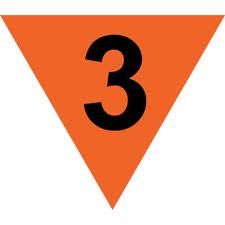
|
mass fire |
|
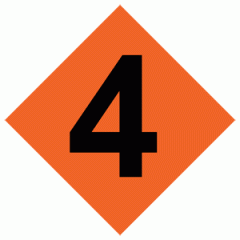
|
moderate fire no blast |
|
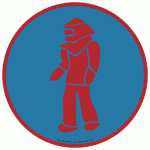
|
wear full protective clothing (set one) indicates the presence of highly toxic chemical agents that may cause death or serious damage to body functions |
|
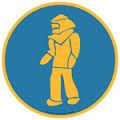
|
wear full protective clothing indicates the presence of harassing agents (riot control agents and smokes) |
|
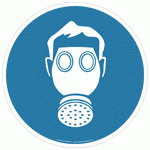
|
wear breathing apparatus
|
|
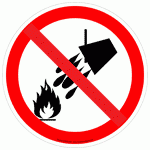
|
apply no water dangerous reaction will occur if water is used in an attempt to extinguish the fire. this symbol may be posted together with any of the other hazard symbols |
|

|
vx nerve agents persistent and nonpersistent v-nerve agents
|
|
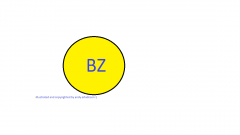
|
incapacitating nerve agent ex lacrymatory agent vomiting agent |
|

|
type mustand agent/blister agent |
|

|
type nerve agents persistent and nonpersistent nerve agents |
|

|
lewisite blister agent ex nonpersistent choking agent nonpersistent blood agent
|

